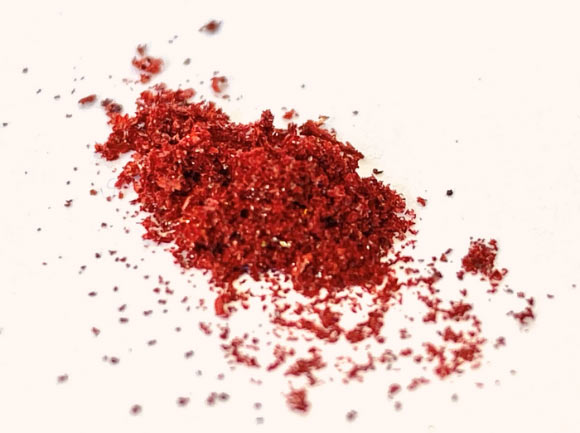Researchers at the University of Toronto have incorporated a compound derived from beta-carotene, or β-carotene — an organic, strongly colored red-orange pigment abundant in plant-based foods such as carrot, tomato, potato, watermelon, and many more — into a polymer that’s fully degradable.

A compound derived from beta-carotene was one of the building blocks in a fully degradable, biobased polymer. Image credit: Helen Tran.
Polymers and plastics formed from natural, biodegradable ingredients are highly desired for use in consumer products.
By using indigo, vanillin and melanin, scientists have created biobased polymers that have electrically conductive properties that are attractive for energy storage, biomedical and sensor applications.
Carotenoids are another set of natural compounds expected to transfer charges, but they haven’t been widely tested in polymer design.
Another possible benefit is that these compounds break apart in the presence of UV light and certain chemicals.
So, Dr. Helen Tran and her colleagues from the University of Toronto, Azalea Uva and Angela Lin, wanted to use a carotenoid-sourced compound to make a degradable material that could be selectively broken down with an acid and sunlight.
They combined the carotenoid derived from beta-carotene, a 10-carbon dialdehyde, and p-phenylenediamines, a group of compounds used in degradable polymers, to make three different poly(azomethine)s.
When dried, the resulting materials ranged in color from black to bright red.
In initial experiments, the authors determined that the bright red version — created with p-phenylenediamine containing two hexyl side chains — was the best candidate to test further.
The material completely broke down into its original components in acidic solutions, which could potentially be recovered.
However, when both acid and artificial sunlight were used, this process sped up.
And after an extended period of time, the sample broke down even further into smaller dialdehydes and other compounds.
“Our polymer system was found to have two modes of on-demand degradation, with acid hydrolysis accelerating the rate of polymer degradation and artificial sunlight generating additional degradation products,” the researchers said.
They now plan to evaluate this new fully degradable polymer’s ability to conduct electricity.
“Our work highlights carotenoid monomers as viable candidates in the design of biobased, degradable, and conjugated polymers,” they said.
Their paper was published in the Journal of the American Chemical Society.
_____
Azalea Uva et al. 2023. Biobased, Degradable, and Conjugated Poly(Azomethine)s. J. Am. Chem. Soc 145 (6): 3606-3614; doi: 10.1021/jacs.2c12668






